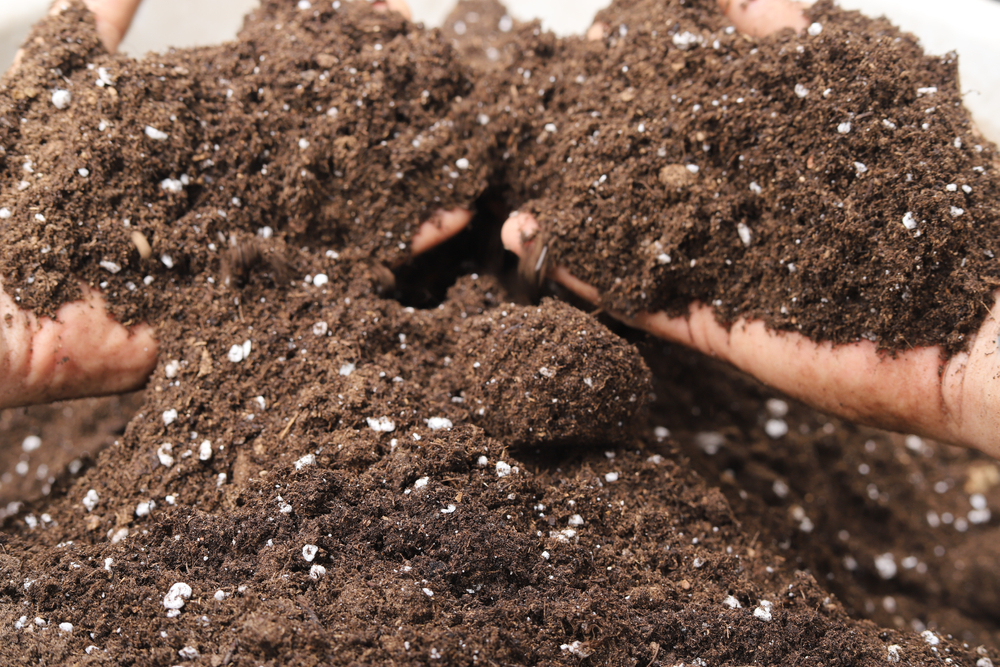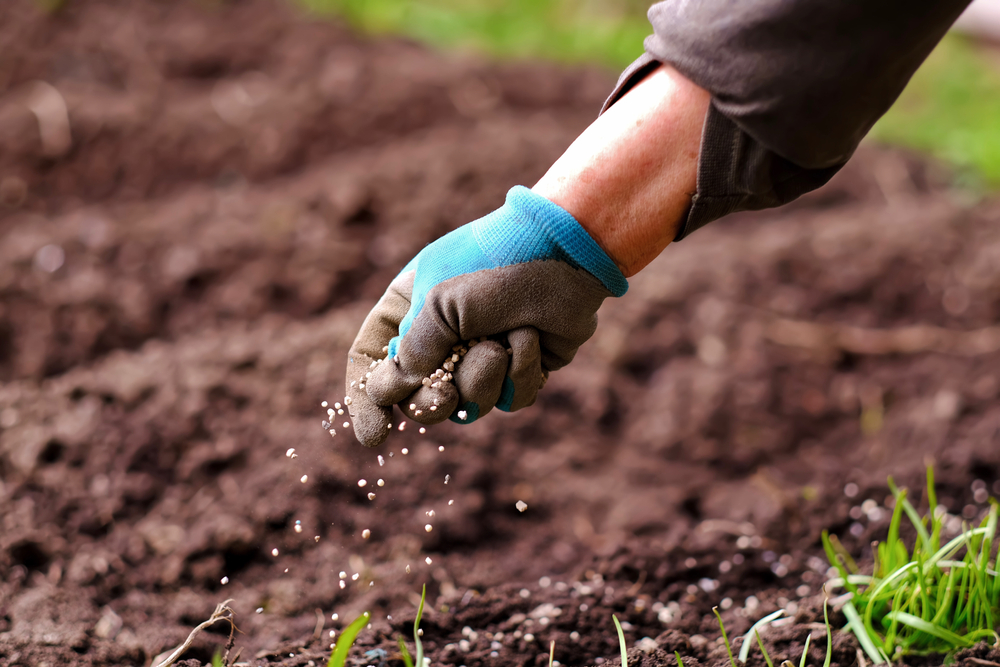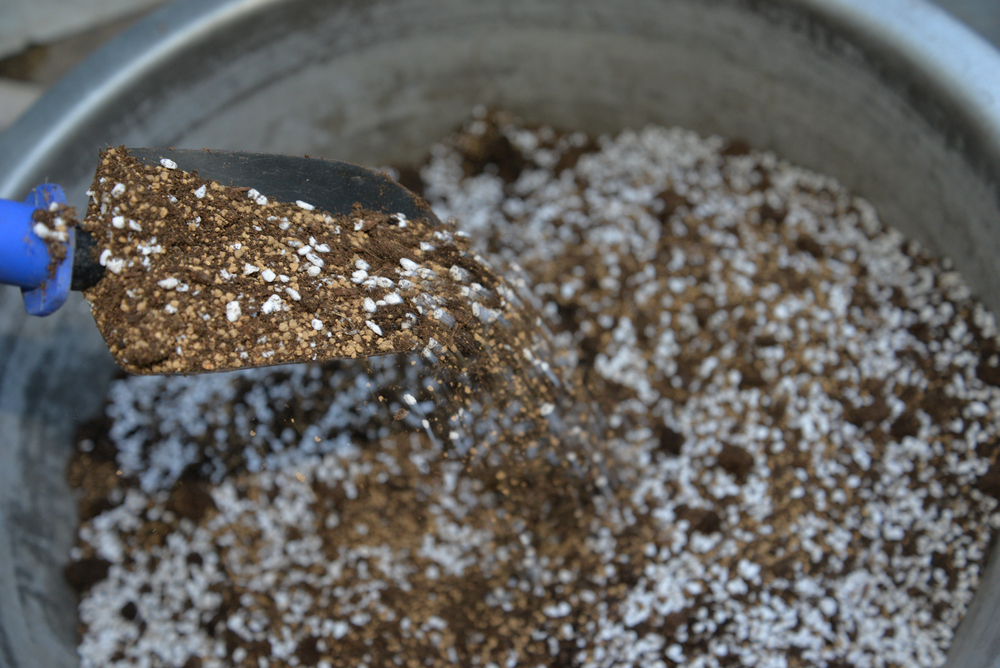Many new cannabis cultivators reach for supplemental nutrients to take care of their plants’ dietary requirements. Thanks to the increasingly relaxed restrictions on indoor cannabis growing, weed-specific nutrient products are getting easier to find. Plus, cannabis nutrients offer growers a simple way to dose their weekly feeding schedules.
The Facts On Cannabis Fertilizer: Tips New Cultivators Should Consider
Although supplemental nutrients are commonplace in cannabis circles, some people prefer relying on organic fertilizers to feed their weed. Many cultivators interested in sustainable and organic growing methods gravitate towards fertilizer formulas. While it’s possible to rely on fertilizers rather than supplemental nutrients, people must consider the unique challenges of using these soil blends. It doesn’t matter how “high-quality” a fertilizer formula is; if a cultivator doesn’t know how to use this soil mix properly, it may do more harm than good.
How Do Cannabis Growers Use Fertilizer In Their Grow Schedule?
Generally, cannabis growers who use fertilizers either mix a pre-made formula into their soil or develop a custom soil mix with their favorite nutrient-rich ingredients (aka “amendments”). There’s no set proportion on how much fertilizer a cannabis grower uses, but they need to use formulas with higher nitrogen during vegetation and more phosphorus and potassium during flowering.
The amount and type of fertilizer a person adds to their soil is up to their grow strategy. For instance, some people rely on fertilizers for their plant’s nutritional needs, while others only add a fewamendments throughout the growing process for specific purposes. No matter which strategy a cultivator uses, they must constantly monitor their soil’s pH levels to ensure they’re within 5.8 – 6.2. If the pH falls outside this range, people need to use a pH increase or decrease powder to bring it to an acceptable level.
 Some branded fertilizer products may have recommended ratios to help new gardeners determine how much to add to their standard soil mix. Generally speaking, it’s best to use slightly less than the recommended fertilizer amount when testing a new product. It’s easier to add more fertilizer to correct a suspected nutrient deficiency than to flush nutrients out of a soil mix.
Some branded fertilizer products may have recommended ratios to help new gardeners determine how much to add to their standard soil mix. Generally speaking, it’s best to use slightly less than the recommended fertilizer amount when testing a new product. It’s easier to add more fertilizer to correct a suspected nutrient deficiency than to flush nutrients out of a soil mix.
Also, as mentioned in our guide to picking the best cannabis soil, weed performs best in loamy soil with a good balance of water retention and aeration. Therefore, the fertilizer a person adds to their cannabis soil should complement these essential features. Cultivators who use fertilizer constantly monitor the water drainage in their pots and look for warning signs like bacterial growth, root rot, and mold.
Do Cultivators Who Use Fertilizers Need Supplemental Nutrients?
Since fertilizers naturally contain higher percentages of essential minerals, cultivators often don’t need supplemental liquid or powdered nutrients. However, whether you need to add these nutrients to your routine depends on how you’re using fertilizers. If you’re only adding a few amendments to your cultivation schedule, you may need to use some supplements throughout the vegetative and flowering stages. On the other hand, people who use high traces of fertilizers probably won’t need to add supplemental nutrients.
Regardless of how much fertilizer you use, you won’t need as many supplemental nutrients compared with those who only use standard potting soil. People new to adding fertilizers to their soil should start without adding supplemental nutrients unless they notice warning signs of a deficiency. Even if you feel you need to add some extra nutrients to your fertilized soil, please add fewer nutrients than you would with a regular potting mix.
For more detailed info on using supplemental nutrients in cannabis plants, check out this previous International High Life post.
When Should Weed Growers Start Using Fertilizers?
Cannabis cultivators always wait until their plants reach the vegetative stage before adding fertilizer to their growing medium. Since seedlings have a weak root structure, they can’t adequately absorb the high concentration of nutrients found in fertilizer. In most cases, these seedlings will show signs of “nutrient burn” and stunted growth when planted in a fertilizer-rich formula.

Therefore, anyone growing cannabis should grow their seedlings in non-fertilized soil or a starter pod before transplanting them into a larger pot with standard potting soil. After your plant has transitioned to the vegetative stage, you can safely add fertilizer to your soil mix. However, the amount of fertilizer that’s right for your plant depends on the strain you’re growing and the amendments in your product. When you’re just starting out with fertilizers, be sure to add a tiny amount to your mix and monitor your plants for signs of distress. The odds are higher you’ll grow a healthy plant with less fertilizer as this reduces the odds of “nutrient burn.” Plus, as mentioned before, adding more nutrients later on is always easier than getting them out of your soil.
What Amendments Are The Best For Cannabis?
Cultivators can go crazy researching the extra ingredients to include in their fertilizer formula. However, here’s a brief list of the most common amendments found in fertilizers for cannabis and their primary advantages:
- Bat guano: Rich in nitrogen, bat guano is a slow-release fertilizer with multiple macro and micronutrients. Plus, bat guano has natural antimicrobial properties that may decrease the risk of diseases like mold.
- Worm castings: Similar to bat guano, worm castings are naturally high in nitrogen plus a rich source of calcium and magnesium. These properties improve photosynthesis, strengthen roots, and encourage beneficial bacteria in your soil.
- Bone meal: This amendment is well known for its high concentration of phosphorus, making it a good choice for the flowering stage of development. Understandably, since “bone meal” comes from bones, it’s also a good source of calcium.
- Kelp: Kelp is a species of algae containing many special growth hormones and micronutrients that help cannabis plants grow. The extra hormones in kelp are particularly beneficial for stem flexibility, which is good news for anyone using training techniques like bending or ScrOG.
- Molasses: Interestingly, many cannabis growers use sugary amendments like molasses during the late flowering stage of development. According to some growers, the carbohydrates in molasses stimulate increased bud production just before harvest. If you experiment with this amendment, stick with one tablespoon of molasses per gallon of water on your first try.
Are There Risks To Using Fertilizers When Growing Cannabis?
The most considerable risk with using fertilizers in your soil is that you’ll overwhelm your plant with too many nutrients. Going too far with fertilizers can cause issues such as “nutrient burn” or “nutrient lockout.” In the first scenario, your cannabis plant has too many nutrients; in the second case, your cannabis plants will actively block the influx of nutrients from entering your plant’s roots. In both cases, your cannabis plant will show signs of weakness, yellowing leaves, and stunted growth.
Since you can’t stop feeding cannabis plants fertilizers as you would a supplemental nutrient, it’s more challenging to address either of these issues. If you notice nutrient burn when feeding your plants vegetative or flowering nutrient formulas, you can stop your feeding schedule and flush your plants with water till they regain their strength. However, with fertilizer mixes, you’ll probably need to adjust your soil ratios and possibly add inert materials (e.g., coco coir) to your soil to lighten the nutrient intensity as you flush with water.
As you can see, addressing nutrient lockout or burn with fertilizers is more challenging than using supplemental nutrients. For this reason, people should have experience growing cannabis before relying on these formulas.
Is Fertilizer The Right Choice For Your Flowers?
Typically, fans of organic and sustainable cannabis growing support using fertilizer-rich “super soils” rather than supplemental nutrients. Not only are fertilizers a more “natural” way of growing, some cannasseurs argue they produce bigger and better-tasting buds. While there’s debate over whether supplemental nutrients impact taste, quantity, and potency, more growers are interested in the “living soil” movement.

However, since it’s easy to get fertilizer formulas wrong, beginners should stick with standard potting soil till they master a few marijuana strains. After growers get a handle on the basics of growing cannabis, it’s easier to experiment with adding fertilizers to boost bud production or cut supplemental nutrient use. Just be sure to add amendments or pre-made fertilizer mixes slowly and take note of how different strains respond. Sometimes it takes cultivators years to work out a fertilizer mix that works best for their growing style, so detailed note-taking is crucial for those interested in mastering marijuana manure.

Leave a Reply